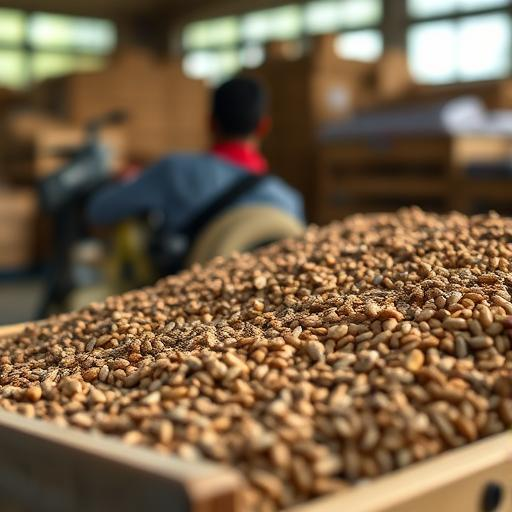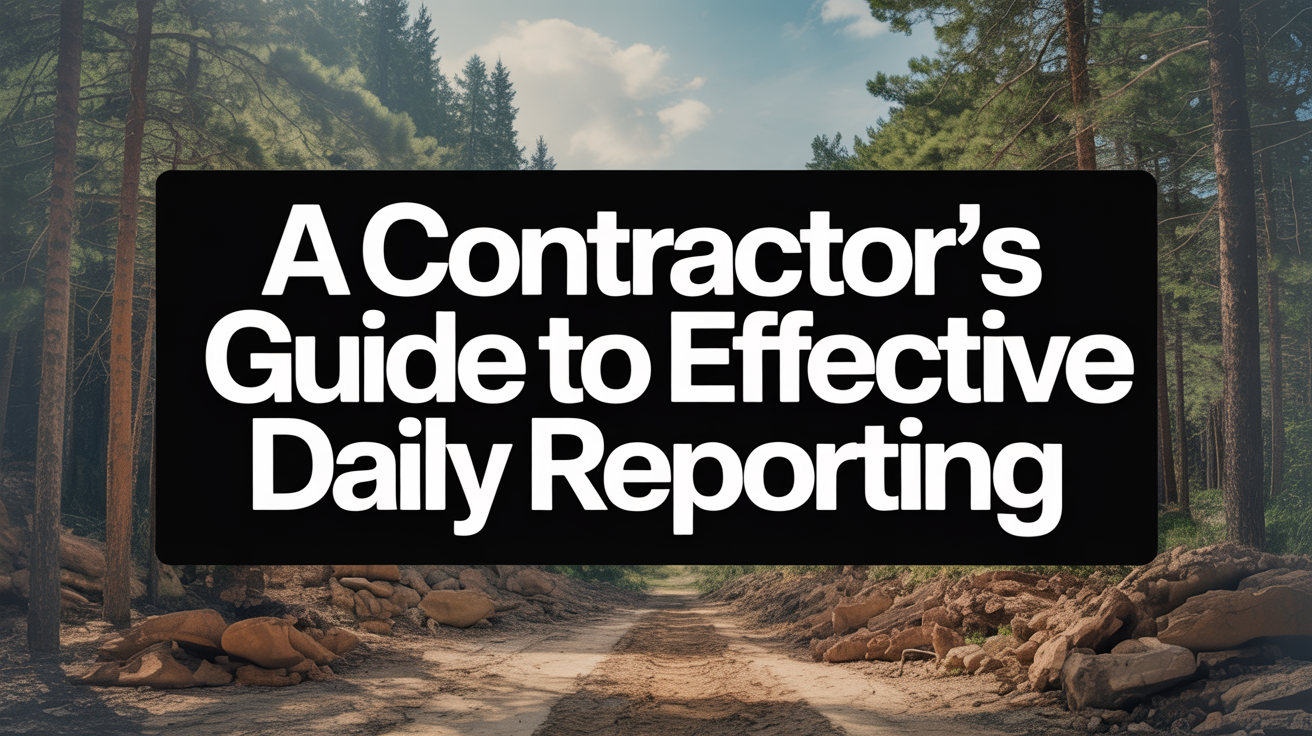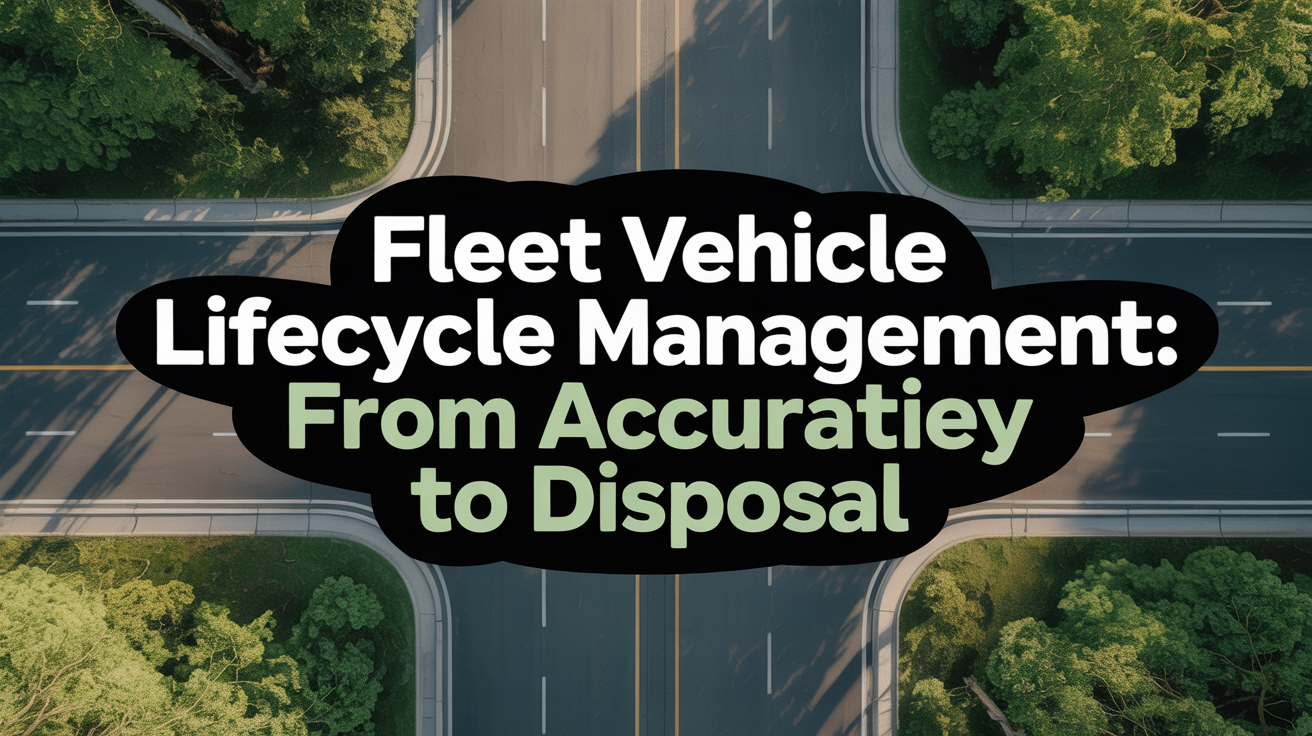Picture this: a massive shipment vanishes somewhere between the warehouse and the customer. Panic sets in. Where did it go? Was it temperature-controlled correctly? Who handled it last? Shockingly, billions are lost annually due to supply chain disruptions and lost goods, a headache amplified when you can’t pinpoint *where* things went wrong. This lack of visibility isn’t just frustrating; it’s a critical business risk.
Enter load traceability. It’s the practice of tracking and documenting the journey of goods – entire loads, specific pallets, or even individual items – throughout the supply chain. Think of it as a detailed travel diary for your products. This article unpacks why load traceability is indispensable, explores its moving parts, and highlights the awesome benefits it brings. We’ll also touch upon how platforms like Nektar.io are providing smart ways to manage this complex process.
Understanding Load Traceability
So, what exactly is load traceability? At its heart, it’s about knowing the history, location, and application of products as they move through the supply chain. It creates a verifiable record from origin to destination, capturing key data points along the way. This isn’t just simple package tracking you see as a consumer; it often involves much more granular detail critical for business operations, quality assurance, and compliance.
Unlike basic tracking which might just tell you “in transit” or “delivered,” load traceability digs deeper. It can involve monitoring conditions (like temperature for perishables), recording handling procedures, verifying custody changes, and linking specific batches or lots to their journey. This level of detail is vital for managing quality, safety, and accountability. As the Nomadia Group states:
“Goods traceability is an essential process in the logistics management of businesses. It involves tracking and recording all the stages through which goods pass, from their point of origin to their final destination.” -Nomadia Group
The Importance of Load Traceability in Modern Supply Chains
Why the big fuss about load traceability now? Modern supply chains are intricate webs, often spanning continents and involving multiple partners. Without a clear view of product movement, things can get messy fast. Full traceability provides the transparency needed to manage this complexity effectively. It helps businesses meet increasingly strict regulatory demands, especially in industries like food, pharmaceuticals, and electronics, where product history is non-negotiable.
Quality control is another huge driver. If a defect is found in a product batch, traceability allows companies to quickly identify affected items, pinpoint where the issue occurred in the supply chain, and initiate targeted recalls. This prevents widespread distribution of faulty goods, protecting consumers and the company’s reputation. Imagine the cost savings and brand protection this enables! ✅
Let’s not forget the customer! In an era where consumers demand transparency and quick answers, being able to provide accurate information about product origin, status, and delivery estimates builds trust and satisfaction. Knowing exactly where a shipment is and when it will arrive improves the overall customer experience and fosters loyalty. It shows you’re on top of your game. Interlake Mecalux puts it well:
“Traceability systems are designed to improve the goods safety, control risks and ensure the quality of processes and products.” -Interlake Mecalux
Key Components of an Effective Load Traceability System
Building a robust load traceability system involves several key ingredients working together. First up are identification methods. Think barcodes (those familiar stripy rectangles) and QR codes – easy to scan and great for basic tracking. They link a physical item to its digital record.
For more advanced capabilities, Radio-Frequency Identification (RFID) tags come into play. These use radio waves to transmit data, allowing for faster scanning of multiple items without direct line-of-sight. GPS trackers are also crucial for real-time location monitoring of vehicles and high-value shipments.
Tying it all together is the software. Specialized traceability software platforms or modules within larger Supply Chain Management (SCM) or Enterprise Resource Planning (ERP) systems collect, store, manage, and analyze the data gathered from scanners, sensors, and trackers. This software provides the dashboards and reports needed for visibility and decision-making. 📊
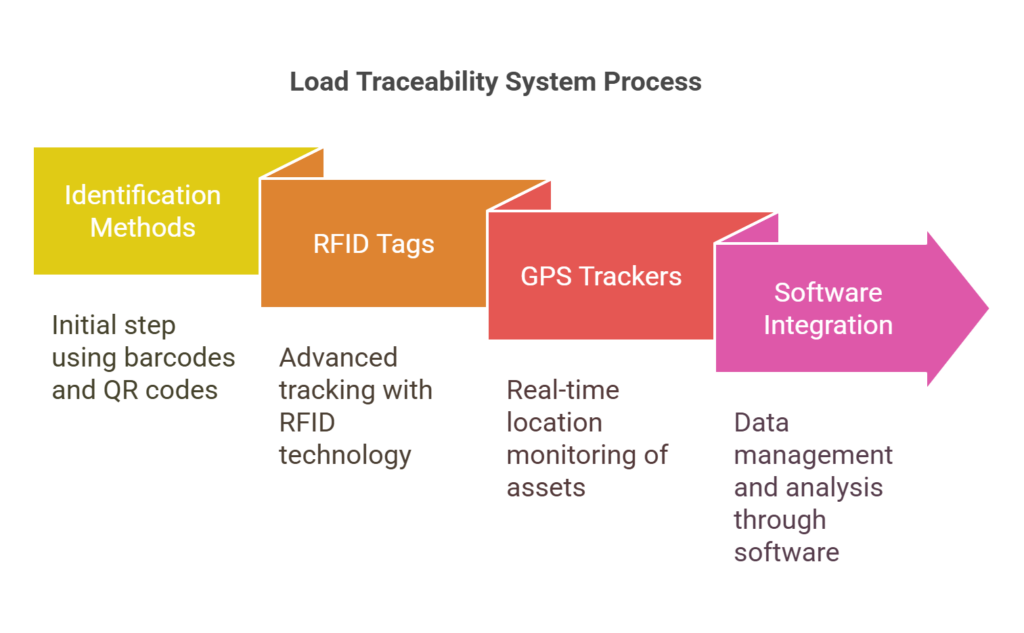
Benefits of Implementing Load Traceability
Okay, so you put a system in place. What’s the payoff? Plenty! One of the biggest wins is improved operational efficiency. Knowing exactly where goods are eliminates time wasted searching for inventory, streamlines receiving and dispatch processes, and optimizes routing. Less guesswork, more smooth sailing. ⛵
Error reduction is another major plus. Manual tracking is prone to human error. Automating data capture through barcodes or RFID drastically cuts down on mistakes in inventory counts, shipping documents, and order fulfillment. This means fewer costly shipping errors and happier customers.
Better inventory management is almost guaranteed. Real-time visibility into stock levels and locations prevents overstocking or stockouts. You can manage inventory based on actual data, improving cash flow and ensuring products are available when needed. It also helps in managing expiry dates for perishable goods more effectively.
Finally, enhanced customer trust is invaluable. Providing accurate tracking information, ensuring product quality through better recall management, and demonstrating compliance builds confidence. This transparency can be a powerful differentiator in a competitive market. As Mecalux notes, the benefits extend across the board:
“Traceability systems have multiple benefits for each party involved: For companies: it helps them to identify critical points along the supply chain to resolve incidents and boost productivity.” -Mecalux
Challenges in Implementing Load Traceability
While the benefits are compelling, setting up load traceability isn’t always a walk in the park. One common hurdle is the initial cost. Investing in hardware (scanners, tags, sensors) and software, plus potential infrastructure upgrades, requires upfront capital. Businesses need to carefully evaluate the return on investment.
Integrating the new system with existing legacy software (like older ERP or warehouse management systems) can be complex. Ensuring seamless data flow between different platforms requires technical expertise and careful planning to avoid creating information silos. Compatibility issues can definitely cause headaches. 🤕
Getting everyone on board is also key. Staff need proper training to use the new technology and processes effectively. Change management is crucial to overcome resistance and ensure adoption across different departments and potentially even external partners in the supply chain. Collaboration is essential for success.
Best Practices for Load Traceability Implementation
Ready to take the plunge? Here are some tips for a smoother implementation. First, clearly define your objectives. What specific problems are you trying to solve? Better compliance? Reduced spoilage? Faster recall? Knowing your goals helps select the right technology and scope for your project.
Choose technology wisely. Don’t just chase the latest gadget. Select identification methods (barcode, QR, RFID) and software that fit your specific needs, budget, and operational environment. Consider scalability – will the system grow with your business? A phased approach, starting with critical areas, can often be sensible.
Invest in training and integration. Ensure your team understands how to use the system correctly and why it’s important. Plan the integration with existing systems meticulously. Testing thoroughly before a full rollout helps catch glitches early. Don’t underestimate the human element! 🧑💻
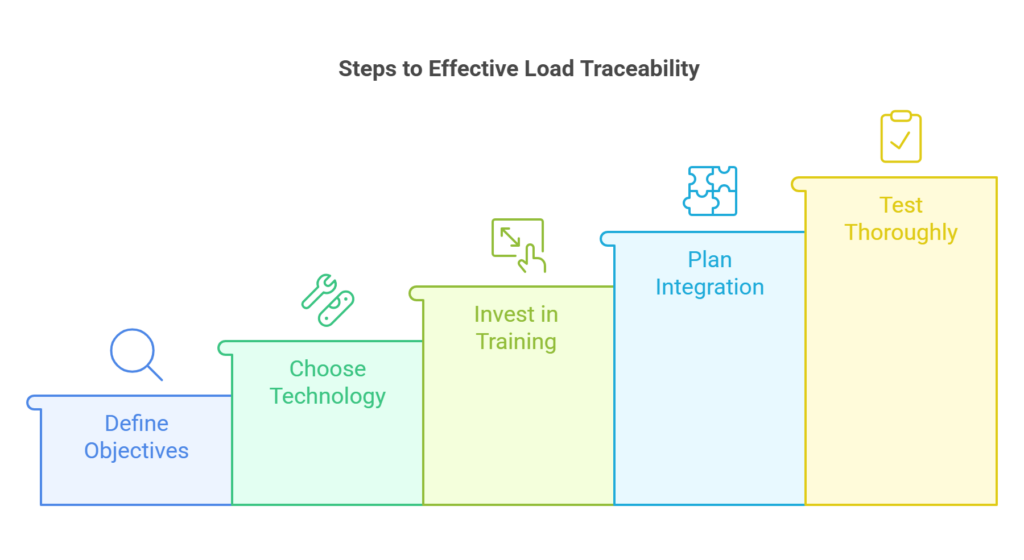
The Role of Technology in Load Traceability
Technology is the engine driving modern load traceability. Beyond barcodes and basic RFID, the Internet of Things (IoT) plays a massive role. IoT sensors embedded in shipments or vehicles can monitor not just location but also temperature, humidity, shock, and other environmental conditions in real-time, providing invaluable data for quality assurance.
Blockchain technology is also making waves. Its decentralized and immutable ledger offers a highly secure and transparent way to record transactions and movements across the supply chain. This is particularly useful where trust and verification between multiple parties are paramount. Think high-value goods or pharmaceuticals.
Artificial Intelligence (AI) and Machine Learning (ML) are adding another layer of sophistication. These technologies can analyze the vast amounts of data generated by traceability systems to predict potential delays, optimize routes, identify patterns indicating potential issues (like theft or spoilage), and improve overall supply chain planning. Platforms like Nektar.io are at the forefront, leveraging advanced tech to offer powerful traceability capabilities. As the Nomadia Group highlights about a specific tech:
“Radio-Frequency Identification (RFID) technology enables real-time traceability using electronic chips. Each product is equipped with an RFID chip that can be remotely read, greatly simplifying inventory and goods movement management.” -Nomadia Group
Case Studies: Successful Load Traceability Implementation
Let’s look at some real-world examples. A major food distributor implemented RFID tracking on their reusable plastic containers (RPCs) used for shipping fresh produce. This gave them real-time visibility into container locations, reducing loss and theft significantly. They could also monitor temperature throughout transit, ensuring produce quality and compliance with food safety regulations, ultimately cutting down on spoilage claims.
In the pharmaceutical industry, a company adopted unit-level serialization using 2D barcodes combined with a track-and-trace software platform. This allowed them to comply with strict regulations against counterfeit drugs by tracking each medicine package from production to pharmacy. It also improved recall efficiency dramatically, enabling them to pinpoint affected batches instantly and protect patient safety.
Future Trends in Load Traceability
What’s next for load traceability? Expect even greater integration of IoT sensors, providing richer data streams about product condition and environment. We’ll likely see more widespread adoption of blockchain for enhanced security and transparency, especially in global supply chains involving many partners.
AI will become increasingly important for predictive analytics, identifying risks before they become problems and optimizing logistics in real-time. Sustainability tracking is also emerging, with consumers and regulators demanding more information about the environmental footprint of products, driving traceability beyond just location and condition. The push for end-to-end visibility will only intensify. 🌍
How Nektar.io Enhances Load Traceability
Navigating the complexities of setting up effective load traceability can feel overwhelming, but platforms like Nektar.io are designed to simplify this. They offer sophisticated solutions that integrate various tracking technologies, providing a unified view of your supply chain.
Nektar.io focuses on delivering actionable insights from traceability data. Their platform can help businesses not only track goods but also analyze performance, identify bottlenecks, ensure compliance, and improve overall supply chain resilience. By leveraging modern tech, Nektar.io provides the tools needed to gain control and visibility over your shipments.💡
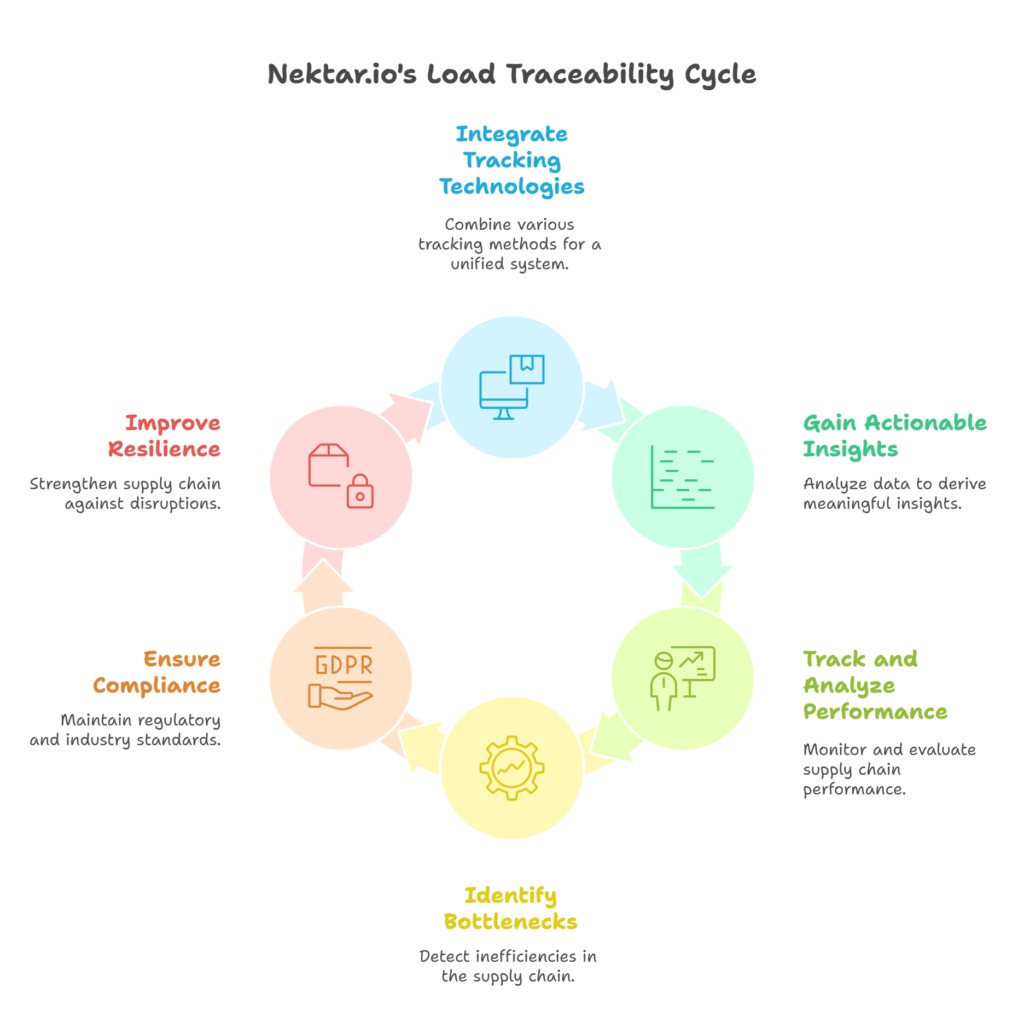
FAQ: Common Questions About Load Traceability
What is the difference between traceability and tracking?
Tracking typically focuses on the current location and status of a shipment (where it is now). Traceability goes deeper, providing a complete history of the product’s journey, including handling, conditions, and custody changes (where it’s been and what happened along the way).
How does load traceability improve supply chain efficiency?
It reduces time spent searching for goods, minimizes errors in shipping and receiving, optimizes inventory levels by providing real-time data, streamlines documentation, and enables faster response to disruptions or quality issues, all contributing to smoother operations.
What industries benefit most from load traceability?
While almost any industry with physical goods benefits, it’s particularly critical for Food & Beverage (safety, spoilage), Pharmaceuticals (compliance, anti-counterfeiting), Electronics (high-value goods, component tracking), Automotive (parts management, recalls), and Aerospace (strict quality control, compliance).
How does load traceability help with regulatory compliance?
Many regulations (like food safety laws or drug pedigree requirements) mandate tracking and documenting product history. Load traceability systems provide the necessary data capture and reporting capabilities to prove compliance, manage recalls effectively, and pass audits.
What are the costs associated with implementing a load traceability system?
Costs vary widely based on scope and technology. They typically include hardware (tags, readers, sensors), software (platform licenses, integration), implementation services (setup, configuration), and ongoing expenses (maintenance, consumables like tags, potential subscription fees).
Conclusion
In today’s fast-paced and complex global marketplace, knowing where your products are and where they’ve been isn’t just nice to have – it’s essential. Load traceability provides the crucial visibility needed to manage supply chains effectively, ensure quality, meet regulations, reduce costs, and keep customers happy. It transforms logistics from a potential black box into a transparent, manageable process.
Implementing a robust system offers significant advantages, from operational efficiency gains to enhanced brand reputation. While challenges exist, the right approach and technology partners can make the transition smooth. If you’re looking to boost your supply chain performance with better load traceability, consider exploring solutions designed for the job. Check out how Nektar.io can help you gain the visibility and control you need. 👍
Key Takeaways:
- Load traceability is essential for supply chain visibility and efficiency
- Implementing load traceability can lead to improved quality control and customer satisfaction
- Advanced technologies are transforming load traceability capabilities
- Nektar.io offers cutting-edge solutions for effective load traceability implementation
